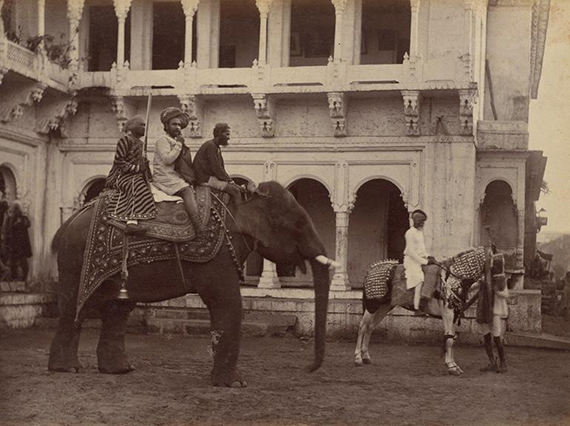
Lala (Raja) Deen Dayal »
The King of Indian Photographers
Exhibition: 23 Apr 2023 – 4 Feb 2024
The Cleveland Museum of Art
11150 East Boulevard
OH 44106 Cleveland
216-4217340
info@clevelandart.org
www.clevelandart.org
Tue-Sun 10-17, Wed+Fri 10-21
In 2016, the museum acquired 37 photographs made by Raja Deen Dayal (1844–1905), hailed as the first great Indian photographer. This exhibition marks the Cleveland debut of these rare images, all of which come from a single album and were shot in 1886 and 1887, an important juncture in the artist’s life. On display alongside Dayal’s photographs are historical Indian paintings, textiles, clothing, and jewelry from the museum’s collection. These objects provide viewers with insight into the cultural context and help translate the objects in the photographs from monochrome into color.
Dayal was a surveyor working for the British government when he took up photography as a hobby in 1874. In 1885, he attempted to make it his career and by 1887 had cemented his stature as one of the country’s top photographers, British or Indian. This rare early album pictures both the maharajas of princely India and the British colonial elite.
Dayal produced formal portraits but also more personal views of the Indian nobility. In a moving portrait of a 10-year-old maharaja, Dayal reveals the boy beneath the crown. Weighed down by necklaces and jewels, he occupies a chair that is too tall for him; his stockinged feet curl under so they touch the ground.
Dayal’s talent also won him access to the highest levels of British society. He photographed government meetings and leisurely afternoons of badminton and picnics, costume parties, and even a private moment of communion between an Englishman and his bulldog. Dayal portrayed how the British brought England with them to India and in some images, the Indian servants who supported that lifestyle. The photographer cultivated his relationship with the military by documenting troop maneuvers, several views of which are included.
Visually striking, seductively charming, and highly informative, these photographs and objects offer new insights into the early career of India’s most important 19th-century photographer and into British and Indian life at the height of the colonial “Raj.”